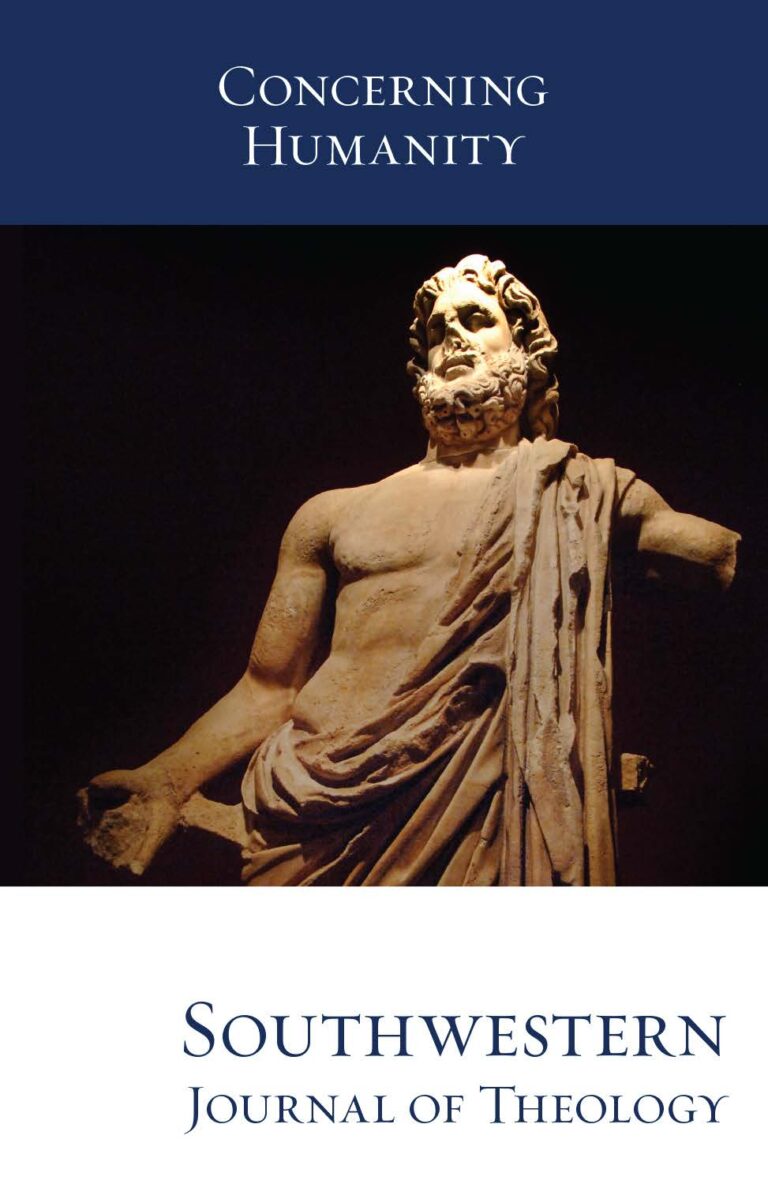
Concerning Humanity
Southwestern Journal of Theology
Volume 59, No. 1 – Fall 2016
Managing Editor: W. Madison Grace II
By Robert H. Stein. Downers Grove: IVP Academic, 2014. 160 pages. Paperback. $18.00.
Robert H. Stein, senior professor of New Testament interpretation at the Southern Baptist Theological Seminary, has a career-long interest in the Gospel of Mark. His dissertation dealt with Mark and redaction criticism. Through the years he has authored a number of articles on Marcan studies. More recently, he wrote an excellent volume on Mark in the Baker Exegetical Commentary on the New Testament in 2008.
The current volume is a helpful commentary that takes the reader through the steps of a careful, conservative interpretation of the most difficult passage in Mark: chapter 13. This is often called “The Little Apocalypse” or “The Olivet Discourse” (although the latter title is more often given to Matthew 24).
This reader appreciates Stein’s attestations that: (1) there is “strong and convincing” proof of Marcan authorship of this Gospel (39), (2) there are clearly no post-70 AD elements in Mark 13, and the missing elements attest the Gospel was written pre-70 AD (35), (3) Marcan geography is correct (51), (4) Mark’s historical narrative is truthful—that he was a conservative editor of Jesus tradition (48), and (5) most relevant to this book: Mark faithfully recorded Jesus’ words to His Disciples in Mark 13, and this was not simply a Marcan creation. Stein provides a good brief overview of the three quests for the historical Jesus, a subject with which every student of the New Testament ought to be familiar (19–36). He also offers a valuable explanation of the warning against over-allegorizing of parables, showing the best way to interpret that genre as well as listing the different types of parables Jesus used (133).
One can easily cut to the chase and read the very helpful three-page chapter eight, which is Stein’s annotated interpretation of Mark 13 (136–38). However, the book is a fairly quick read, and it is greatly beneficial to let Stein take the reader through each interpretive step leading up to chapter 8. He says verses 1–23 refer to the coming destruction of the temple (which occurred in 70 AD), and he gives nine reasons for this assessment (66–69). He believes verses 24–27 refer to Christ’s return. Then the two parables refer to each future event again. The parable of the fig tree in verses 28–31 refers to the fall of the Temple, and the parable on watchfulness in verses 32–37 refers to Christ’s return.
In interpreting eschatological Scripture, there is much debate and disagreement—even among conservative scholars. In interpreting Mark 13 and Matthew 24 there are almost as many interpretive schemas as there are scholars. However, everyone greatly benefits when a scholar of Stein’s expertise leads the reader through a careful, thoughtful exegesis of the text. So, one does not need to agree with all of Stein’s conclusions to appreciate his excellent work and to benefit from reading his interpretation of the text.
Sometimes one can disagree with an idea while still appreciating it as interesting and thought provoking. For instance, Stein believes the best interpretation of the abomination of desolation (Mark 13:8) was the sacrilegious actions of the Zealots and their leaders prior to the fall of the temple (92). Of the other seven possibilities Stein lists (90–91), this reviewer prefers interpreting it as a future act of the antichrist (2 Thess 2:3–4). Yet, Stein presents his argument well, is textually consistent, and gives good food for thought.
There are some minor areas in which this book could be improved. Although Stein makes brief references to Jesus’ cleansing of the temple (54–55, 122–23) and cursing of the fig tree (Mark 11:12–26), more mining of the significance of Mark 13 in relationship with those acts would be helpful. The four indices (subject, author, Mark, and Scripture) are nice, but the subject index is lacking. For instance, none of these topics appear in the subject index even though they all appear several times in the book: genre, hyperbole, parable, theophanic signs, and watchman. “Because” is misspelled on page 130, and “Bar Kokhba” is misspelled in the subject index (147).This excellent volume should interest and benefit any serious student of God’s Word, and it deals with two important subjects. Much of this book deals with the 70 AD destruction of the Temple, a significant historical event for both Jews and Christians. This book also addresses the second coming of Jesus Christ—the blessed hope for all Christians.





